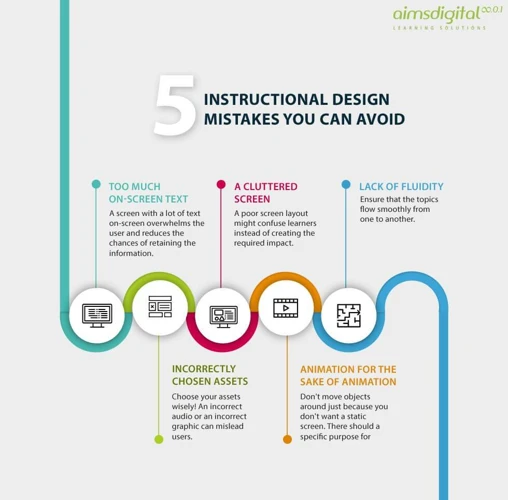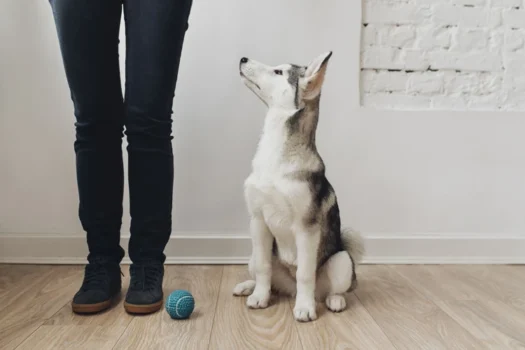As a proud owner of an American Wirehair, you want to ensure that your furry companion is well-behaved and obedient. However, obedience training can be a tricky task, especially if you are not familiar with the common mistakes that many pet owners make. These mistakes can lead to poor behaviour, frustration, and even damage to your home and belongings. In this article, we will discuss the most common obedience training mistakes with American Wirehairs and provide you with practical tips and advice on how to avoid them. So grab your notepad and get ready to become a pro at training your cat!
Mistake #1: Skipping Basic Training

It is true that American Wirehairs are known for their intelligence and adaptability, but that does not mean that they do not need basic obedience training. Skipping this essential step is a common mistake that many cat owners make. Basic obedience training involves litter box training, introduction to scratching posts, coming when called, and much more. By skipping these important training sessions, you risk having an untrained and disobedient cat. So, what basic training should you provide for your American Wirehair? Let’s explore further. For more tips and tricks on training your American Wirehair, check out these Wirehair obedience tips.
Skipping the Litter Box Training
Litter box training is an essential aspect of training your American Wirehair. Skipping the litter box training can lead to a lot of problems and can create inconvenience in your household. The first thing to keep in mind when litter-box training is the placement of the litter box. It’s best practice to place it in a quiet area of the house where your American Wirehair can relieve himself without any distractions.
Additionally, choose the right litter box and litter material. A litter box that is too small or too shallow can make your cat feel cramped and hesitant to use it. The wrong litter material can also cause your cat to avoid the box. Make sure that you keep the litter box clean and tidy to encourage your cat to use it.
To train your cat, start by confining him to one room with his food, water, toys, and a clean litter box. This should be done until your cat is consistently using the litter box. Remember to praise and reward your cat every time he uses the litter box correctly. If your cat has an accident outside the box, gently lead him back to the litter box and encourage him to use it.
Skipping litter box training can lead to behavioural problems, such as urination outside the litter box or refusal to use it at all. Not only can this be frustrating for owners, but it can also lead to health problems for the cat. It is essential to train your cat to use the litter box consistently.
For more training advice, check out our article on 5 Commands for American Wirehair Training and learn about the benefits of obedience training for your American Wirehair. You can also read our article on wirehair obedience trainer tips to learn more about how to properly train your cat.
Skipping the Introduction to Scratching Posts
One of the most important parts of obedience training for an American Wirehair is introducing them to scratching posts. Skipping this crucial step can lead to destructive behaviour that can be difficult to correct later on. Cats by nature require a way to scratch and sharpen their claws, and without an appropriate object to do so, they may resort to damaging furniture, carpets or walls.
There are different types of scratching posts, including those made of cardboard, sisal rope, and carpet. It is worth investing in a few different options to see which one your cat prefers. Simply providing the scratching post, however, is not enough – you need to also teach your American Wirehair how to use it.
To do this, place your cat near the scratching post and gently guide their paws towards it. Encourage them to scratch the post by using a wand toy or rubbing some catnip on it. When your cat does use the scratching post, be sure to praise them and offer a treat.
It is important to understand that cats scratch not only to sharpen their claws, but also to mark their territory. It is recommended to place scratching posts in multiple areas of the home that your cat frequents. This will not only give them different options for scratching, but also allow them to mark their territory in different areas.
In summary, introducing your American Wirehair to scratching posts is a crucial part of obedience training that should not be skipped. It is important to provide a variety of different types of scratching posts and to place them in multiple areas of the home. With patience, praise, and treats, your cat will learn to use the scratching post properly and avoid destructive behaviour. Don’t forget to check out the benefits of obedience training for your American Wirehair in our article here.
Mistake #2: Inadequate Training Methods

As much as we love our American Wirehair Cats, they can be quite stubborn when it comes to obeying commands. This is why adequate training methods are crucial in shaping their behaviour. In this section, we will discuss common mistakes to avoid when it comes to training your cat. Using the wrong methods can lead to unwanted behaviours, and even worse, damage the bond between you and your beloved pet. Keep reading to discover the key to successful training.
Using Punishment Instead of Positive Reinforcement
Training your American Wirehair cat using positive reinforcement techniques is essential. However, many owners make the mistake of using punishment as a way of correcting their cat’s bad behavior. This can actually be counterproductive and cause more harm than good. Let’s take a look at the reasons why using punishment can be detrimental to your cat’s training and well-being:
1. Causes Fear and Anxiety
Punishing your cat can cause them to become fearful and anxious around you. This can lead to a breakdown in trust between you and your feline companion. Your cat may begin to avoid you or become aggressive towards you as a result.
2. Increases Stress Levels
Punishment can also increase stress levels in your cat. This can lead to health problems such as inflammation, digestive issues, and even depression. It can also cause your cat to develop unwanted behaviors as a way of coping with the stress they’re experiencing.
3. Doesn’t Address the Root Cause
Punishing your cat for bad behavior doesn’t address the root cause of the problem. For example, if your cat is scratching your furniture, punishing them won’t stop the behavior. Instead, it’s important to provide them with alternative scratching surfaces and train them to use them.
4. Hinders Learning
Punishment can also hinder your cat’s ability to learn. Instead of understanding what they’re doing wrong and how to correct it, your cat may simply learn to associate certain actions with fear and pain. This can make training more difficult and less effective.
Instead of using punishment, it’s important to use positive reinforcement techniques such as treats, praise, and playtime to encourage good behavior in your American Wirehair cat. By rewarding good behavior, you’re teaching your cat what you want them to do rather than what you don’t want them to do. This will lead to a stronger bond between you and your cat and a happier, healthier feline companion overall.
Neglecting Socialization Training in a Multicat Household
Socialization training is crucial for any cat, especially for those living in a multicat household. When bringing a new American Wirehair cat into your home, it’s important to ensure they feel comfortable and safe around the other cats. Neglecting socialization training in a multicat household can lead to behavior problems like aggression and territorial marking.
To avoid this mistake, start by providing separate litter boxes, food bowls, and sleeping areas for each cat. This ensures that each cat has their own space and doesn’t feel threatened by the others. You can also use calming pheromones or treats to help reduce stress.
Additionally, it’s important to slowly introduce the cats to each other. Start with scent swapping, where you rub a towel on each cat and then move it to the other cat’s area. This helps them get used to each other’s scent. Next, you can start supervised visits between the cats, always keeping a close eye on their behavior. If any signs of aggression or tension arise, separate them and try again later.
Remember, socialization training takes time and patience. Don’t rush the process or force the cats to interact if they’re not comfortable. By following these steps, you can ensure a smooth transition for all the cats in your multicat household.
Mistake #3: Inconsistent Training

One of the most common mistakes cat owners make while training their American Wirehair is being inconsistent with the training methods. Inconsistency in training can lead to confusion for your pet, making it challenging for them to understand your expectations. Although it’s normal to have days when you’re too busy or tired to train your cat, consistency is key to making sure that your pet understands its boundaries to avoid any mishaps. Here are some of the mistakes that you need to avoid if you want to eliminate inconsistency in training.
Not Setting Clear Boundaries
Clear communication is essential in any form of training, especially when training American Wirehairs. Not setting clear boundaries can confuse and frustrate your cat, which can lead to disobedient behavior. Here are some examples of unclear boundaries you can avoid:
- Allowing inappropriate behavior: It’s essential to not allow your cat to engage in any negative behavior or habits. This includes biting, scratching, and jumping on furniture. While it might seem small, ignoring bad behavior is like saying it’s okay to do it.
- Mixing negative and positive reinforcement: Reinforcing both negative and positive behaviors simultaneously can be confusing to your American Wirehair. Focus on positively reinforcing when your cat behaves well, and redirect them when they don’t.
- Fluctuating rules: Setting up rules for your cat is meaningless if they aren’t consistent. Make sure that everyone in your household is on the same page when it comes to setting clear boundaries and enforcing them. Fluctuating rules will only confuse your cat and make training more challenging.
By setting and maintaining clear boundaries, your American Wirehair will understand what’s expected of them. This will lead to more obedient behavior and a happier household.
Training in Short and Infrequent Sessions
Training your American Wirehair in short and infrequent sessions can significantly hamper the effectiveness of their obedience training. Cats have a short attention span, so it’s essential to keep their training sessions brief and focused, with a clear objective in mind. However, making these training sessions too short or infrequent can be counterproductive.
Here are a few downsides of training in short and infrequent sessions:
- Forgetting: Cats are known to have a short-term memory, and if training sessions are too short and scattered over many days, they can forget the lessons they learned in the previous session.
- Difficulty Learning: Short and infrequent training sessions can make it difficult for cats to grasp the training concepts. This can result in a longer and more complicated training process and can be frustrating for both the cat and the owner.
- Limited Progress: When training sessions are too short, it can hamper the progress of the training as there is limited time for the cat to execute the desired behavior and receive the appropriate reinforcement.
Instead of short and infrequent training sessions, try to keep your training sessions between 5 and 10 minutes, and perform them once or twice a day. This way, your cat will have enough time to understand and remember the training, preventing confusion and frustration.
It is also important to choose the appropriate time for training sessions since cats can be easily distracted by external stimuli. Reward and positive reinforcement should be a crucial part of each training session. This process reinforces positive behavior and encourages your American Wirehair to replicate it.
Remember, patience and consistency are the keys to successful training, so don’t rush the process, and give your cat enough time to learn and understand the training.
Mistake #4: Overlooking Good Behaviour
While it’s important to recognize and address bad behavior in your American Wirehair, it’s equally crucial to remember to acknowledge and reward good behavior. Focusing solely on correcting negative habits can cause you to overlook the positive actions that your furry friend exhibits on a daily basis. In this section, we’ll explore the common mistake of overlooking good behavior and how it can hinder your cat’s progress in their obedience training. Let’s dive in and learn how to keep those positive actions at the forefront of your training efforts.
Not Rewarding Good Behaviour
One common obedience training mistake when it comes to American Wirehair cats is not rewarding good behavior. Many people mistakenly believe that they only need to punish their cat when they do something wrong, but this is not an effective long-term training strategy. In fact, rewarding your cat for good behavior is one of the best ways to reinforce positive habits and encourage your cat to continue behaving appropriately.
Here are some common reasons why owners fail to reward good behavior:
- Assuming that good behavior is the norm and therefore not needing to reward it
- Forgetting to reward good behavior in the moment due to other distractions
- Believing that rewards are only necessary during the initial training phase
The truth is that rewards are necessary throughout the training process, and even once your cat has learned a behavior, it’s important to continue reinforcing it. Rewards can be as simple as verbal praise or a pat on the head, or you can use treats or toys to make the reward more enticing.
Here are some tips for rewarding good behavior:
- Always reward good behavior immediately, so your cat associates the behavior with the reward
- Be consistent with your rewards, so your cat knows what to expect
- Use a variety of rewards to keep things interesting for your cat
- Keep rewards small, so your cat doesn’t get too distracted or lose focus during training sessions
- Use positive language and lots of praise when rewarding your cat, so they associate the behavior with your approval
By properly rewarding good behavior, you’ll not only be helping your American Wirehair cat learn new behaviors, but you’ll also be strengthening your bond with them and encouraging many more positive interactions in the future.
Not Keeping Your Cat Engaged Outside Training Sessions
Training your American Wirehair is not limited to just training sessions. It is important to also keep them engaged outside of these sessions so that they can continue practicing good behavior. Here are some ways to keep your American Wirehair engaged outside of training sessions:
- Interactive toys: American Wirehairs are playful and curious cats. Providing them with interactive toys such as puzzle feeders, balls, and wand toys will keep them occupied and engaged. These toys will not only help them pass the time but will also stimulate their minds and burn off excess energy.
- Scratching posts: American Wirehairs have a natural urge to scratch, and providing them with numerous scratching posts will fulfill this urge and prevent them from destroying your furniture. Not only that, but having multiple scratching posts also gives them options and allows them to engage with different surfaces and materials.
- Windows: American Wirehairs love to observe the world outside. Allowing them access to windows or providing them with a window seat will keep them engaged for hours. It also provides them with visual and sensory stimulation, which can improve their overall mood and well-being.
- Catnip: Catnip is a herb that has a natural calming effect on cats. Providing your American Wirehair with catnip toys or plants can help them relax and stay engaged. It can also be used as a reward for good behavior.
By providing your American Wirehair with interactive toys, scratching posts, windows, and catnip, you can keep them engaged outside of training sessions and prevent any destructive or negative behavior. Remember, a happy and engaged cat is more likely to exhibit good behavior and respond positively to training.
Conclusion
In conclusion, obedience training is an essential part of ensuring that your American Wirehair is well-behaved and happy. By avoiding common training mistakes, you can create a strong bond with your pet and achieve successful results. Remember to be patient and consistent in your training efforts, using positive reinforcement and setting clear boundaries. Don’t overlook good behavior, and always keep your cat engaged outside of training sessions. Regular training and socialization can make a significant difference in your cat’s behavior and overall well-being. So, take your time, don’t rush the training process, and enjoy the journey of developing a healthy and happy relationship with your American Wirehair.
Frequently Asked Questions
What are some basic obedience training topics for American Wirehair cats?
Some basic training topics include litter box training, introduction to scratching posts, and teaching good manners such as not jumping on counters.
Is positive reinforcement the only effective training method?
No, while positive reinforcement is widely effective, some cats respond better to other methods such as clicker training or even mild punishment in certain situations.
How can I socialize my American Wirehair cat in a multicat household?
Start off with short supervised introductions, gradually increasing the time they spend together. Provide separate resources such as litter boxes and food bowls, and monitor interactions to prevent aggressive behavior.
What are some signs my American Wirehair cat is not responding well to training?
Signs include avoidance behavior, aggression, or completely ignoring commands.
What are some ways to make training sessions more engaging for my American Wirehair cat?
Use interactive toys or games, try out different training methods, and keep sessions short and frequent to avoid boredom.
Can I train my American Wirehair cat to walk on a leash?
Yes, it is possible to train your cat to walk on a leash. Start off indoors with a harness and leash, and gradually move outside to quieter areas with fewer distractions.
How can I stop my American Wirehair cat from scratching furniture?
Provide designated scratching posts, deter your cat from scratching furniture with double-sided tape or aluminum foil, and redirect their attention when caught scratching furniture.
What should I do if my American Wirehair cat is not using the litter box?
Clean the litter box more frequently, try out different types of litter, and make sure the litter box is in a private and accessible area.
Is it ever too late to start obedience training with my American Wirehair cat?
No, it is never too late to start obedience training. However, it may take longer to see results in older cats.
What should I do if my American Wirehair cat is exhibiting aggressive behavior during training?
Stop the training session immediately and assess the situation. Consult with a professional if necessary, and try different training methods that may be better suited for your cat’s personality.







